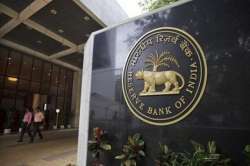RBI to inject Rs 12,000 cr into system to manage liquidity
The RBI said it has the right to decide on the quantum of purchase of individual securities and can also accept offers for less than Rs 12,000 crore.

The Reserve Bank Tuesday announced it will inject Rs 12,000 crore liquidity into the system through purchase of government bonds on October 11 to meet the festival season demand for funds. The government will purchase bonds with maturity ranging between 2020 to 2030, the RBI said in a statement.
The auction to purchase government bonds is a part of the Open Market Operations (OMO) to manage liquidity in the system which seems to be facing liquidity tightness.
"Based on an assessment of prevailing liquidity conditions and also of the durable liquidity needs going forward, the Reserve Bank has decided to conduct purchase of the following government securities under Open Market Operations for an aggregate amount of Rs 120 billion on October 11, 2018 through multi-security auction using the multiple price method," it said.
The result of the auction will be announced on the same day and payment to successful participants will be made during banking hours on October 12, it said.
As part of the OMOs, the RBI will purchase government securities maturing in 2020 bearing interest rate of 8.27 per cent, 2022 (8.15 per cent), 2024 (7.35 per cent), 2026 (8.15 per cent) and 2030 (7.61 per cent).
The RBI said it has the right to decide on the quantum of purchase of individual securities and can also accept offers for less than Rs 12,000 crore.
It may as well purchase marginally higher than the aggregate amount due to rounding-off effect, it said, adding it can also accept of reject any or all the offers either wholly or partially without assigning any reason.
OMOs are the tools which can be used to either inject or drain liquidity from the system.
It is employed to adjust rupee liquidity conditions in the market on a durable basis.If there is excess liquidity, the RBI resorts to sale of securities and sucks out the rupee liquidity.
Similarly, when the liquidity conditions are tight, it buys securities from the market, thereby releasing money into the market.